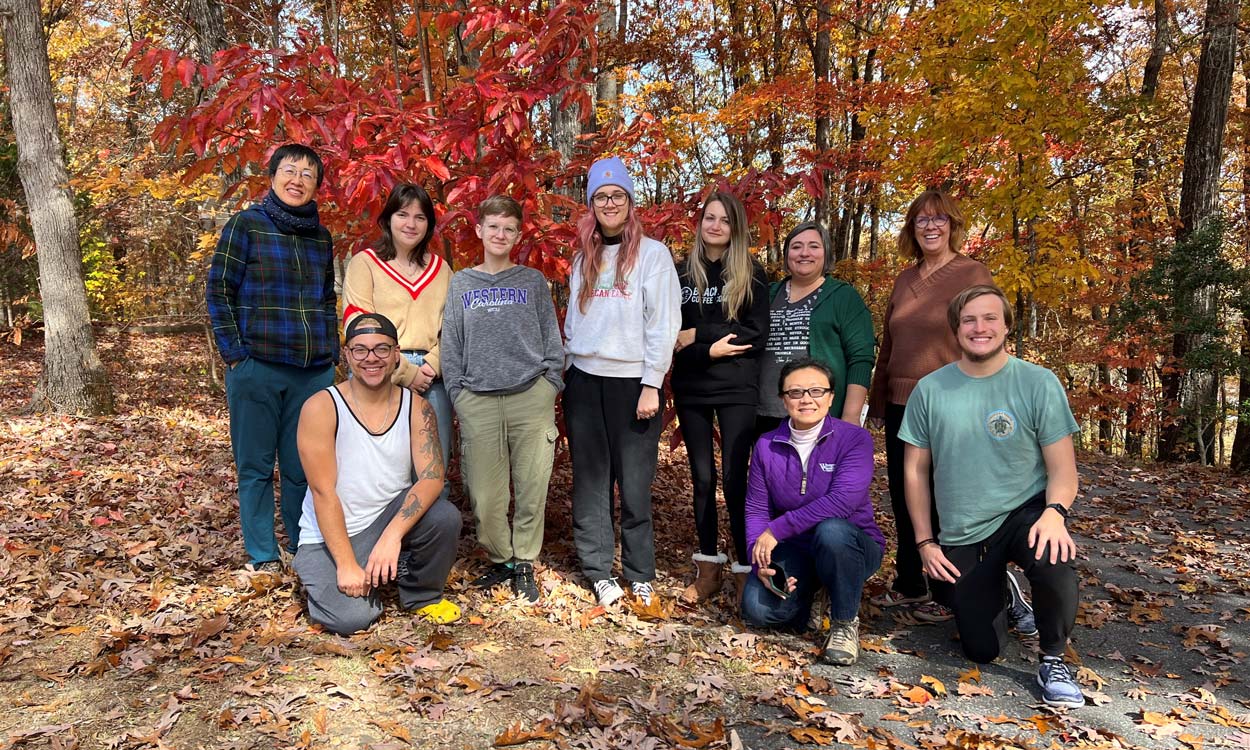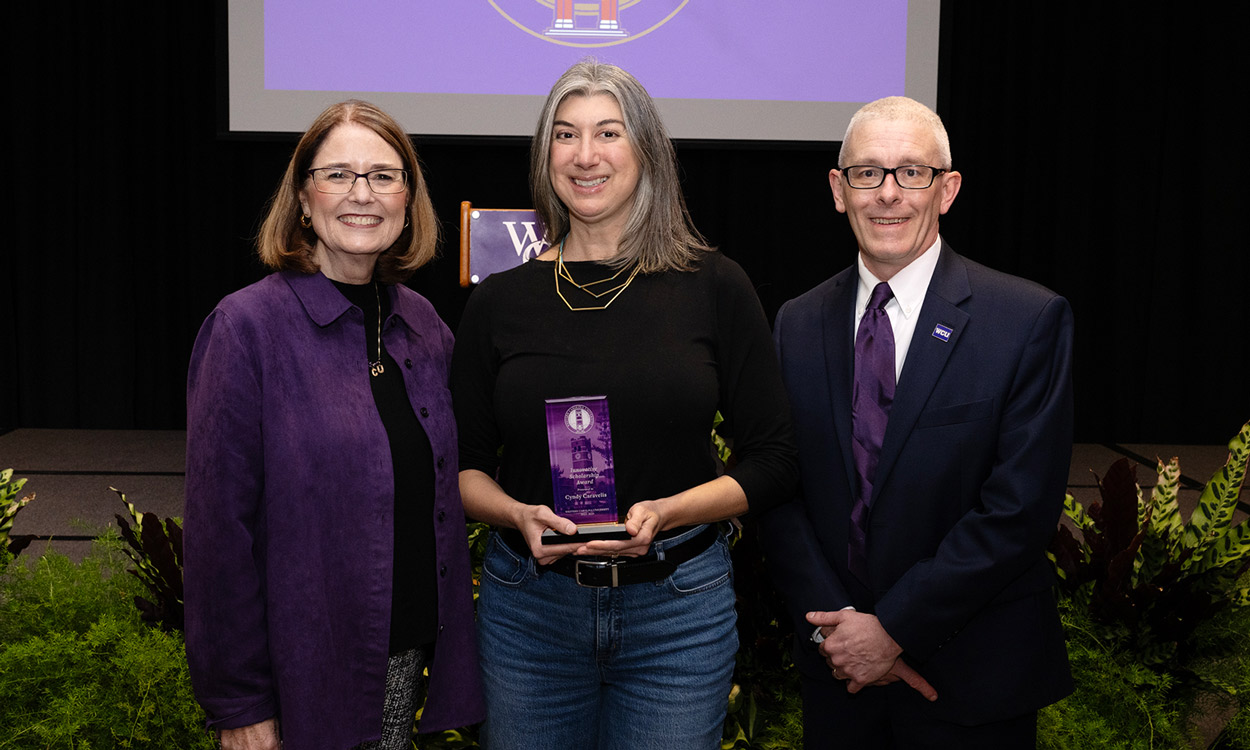Faculty member part of NASA moonwalking test mission
By Julia Duvall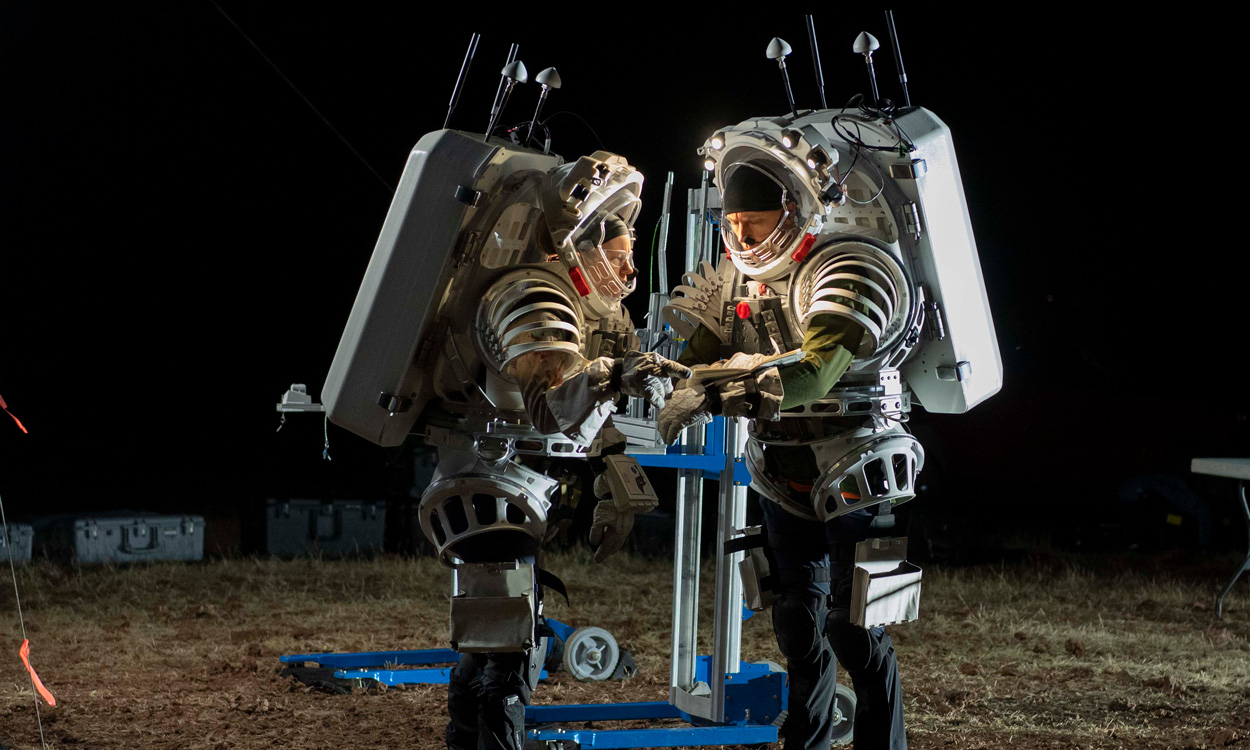
Photo courtesy of NASA.
Amy Fagan, associate professor in the College of Arts and Sciences at Western Carolina University, recently had the opportunity of a lifetime, serving on the NASA moonwalking test mission team for Artemis III which is part of the Artemis missions.
This will be the first human-landing mission in 50 years and the first to include a woman and a person of color.
For this mission, astronauts will explore the lunar South Pole region, which has never been touched by humans before.
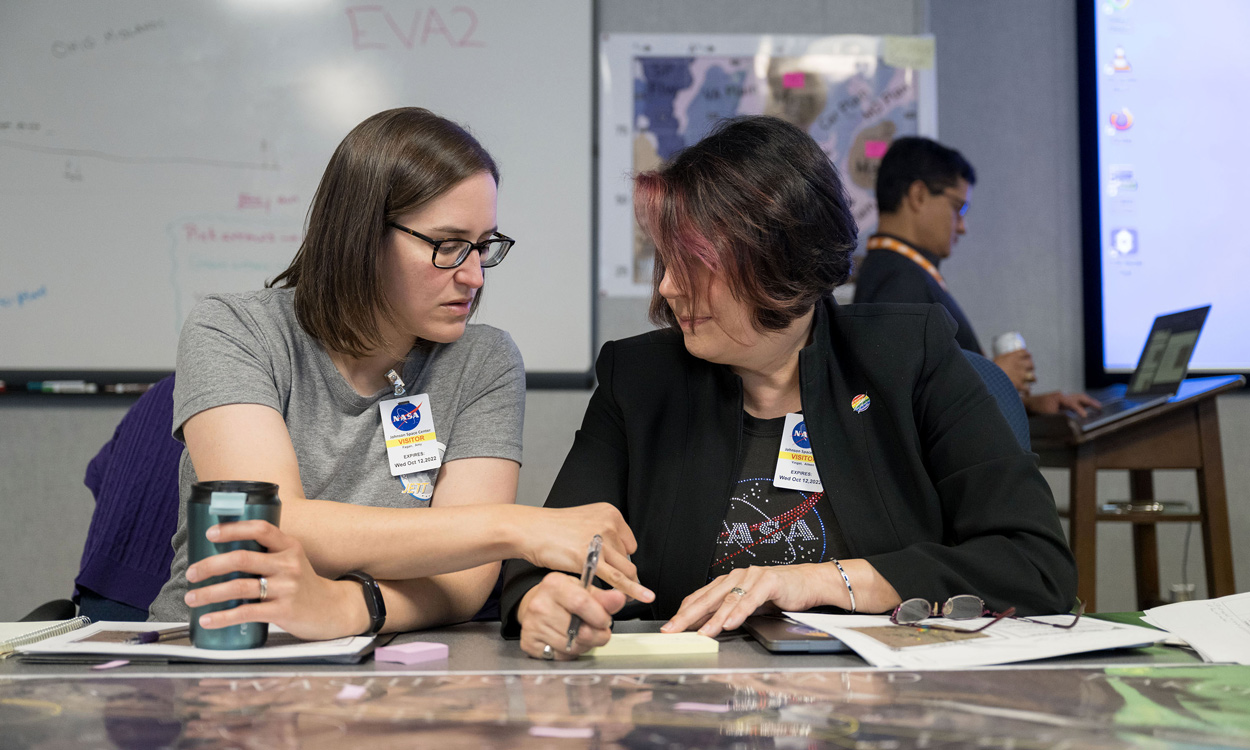
Amy Fagan, left, working in NASA's science evaluation room. Photo courtesy of NASA.
“This is going to inspire school-aged children, particularly girls, to be able to see a female astronaut land on the moon,” said Fagan. “When I go to schools and talk about Apollo, I always get questions about why there weren’t any female astronauts on those missions, so this is going to change the rhetoric on that.”
To prepare for this uncharted terrain, the moonwalking test mission was conducted at the S P Crater near Flagstaff, Arizona. The mission simulation was held in October and named the Joint Extravehicular Activity Test Team Field Test #3.
There were three parts to the test mission, the two astronauts simulating walking on the moon, a scientist and team in the science evaluation room where Fagan was and the flight control office.
“We did a lot of virtual prep-work over the summer,” Fagan said. “We mapped out the crater and decided on our scientific objectives and gave the information to NASA who then connected the dots for us as far as how quickly the astronauts could get from one area to the other collecting samples.”
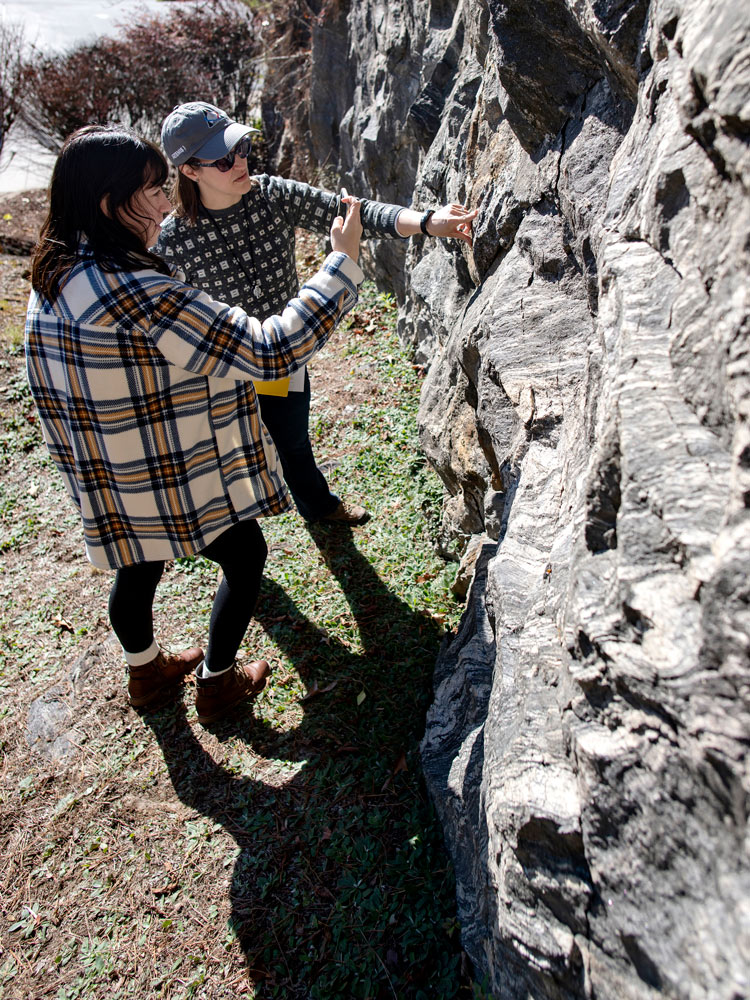
Amy Fagan, right, works with a student at a rock outcropping in Sylva.
This also gave NASA a chance to test out new technology and tools for the mission to determine what the crew liked and did not like or what other resources they might need.
“We were learning how to best support the astronauts on the surface of the moon and define where they will be going when they land,” Fagan said. “We have much better technology and higher resolution images than we did 50 years ago, so that helps us pinpoint where the astronauts are going.”
The Apollo missions focused on the near side of the moon, which we can see from earth. The lunar South Pole is very dark and shadow covered, so this is an entirely new landscape for NASA astronauts to explore.
“We had the crew out at the test site in the middle of the night, which meant we were also working in the middle of the night,” Fagan said. “With the crew experiencing conditions like they will on the moon, this allowed us to make changes when necessary to collection sites and also our objectives. The prep work over the summer allowed us to make quick and informed decisions when we needed to make a change in direction.”
For Fagan, this once in a lifetime opportunity was not lost on her, despite the long hours and months of prep work.
“This has been a very eye-opening experience to see all that goes into these missions,” said Fagan. “I am thrilled that I was able to be part of the big return of NASA’s human-landing missions.”
To learn more about the Artemis missions, go to nasa.gov/specials/artemis.
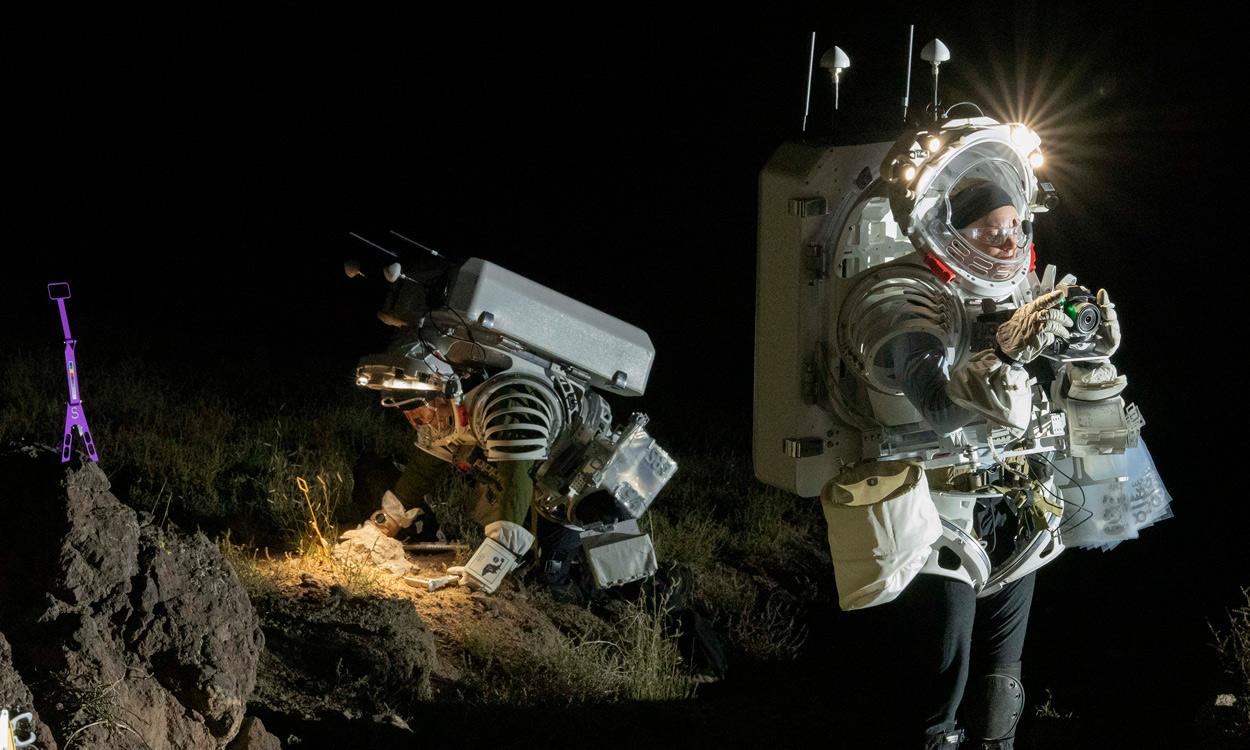
Photo courtesy of NASA.
